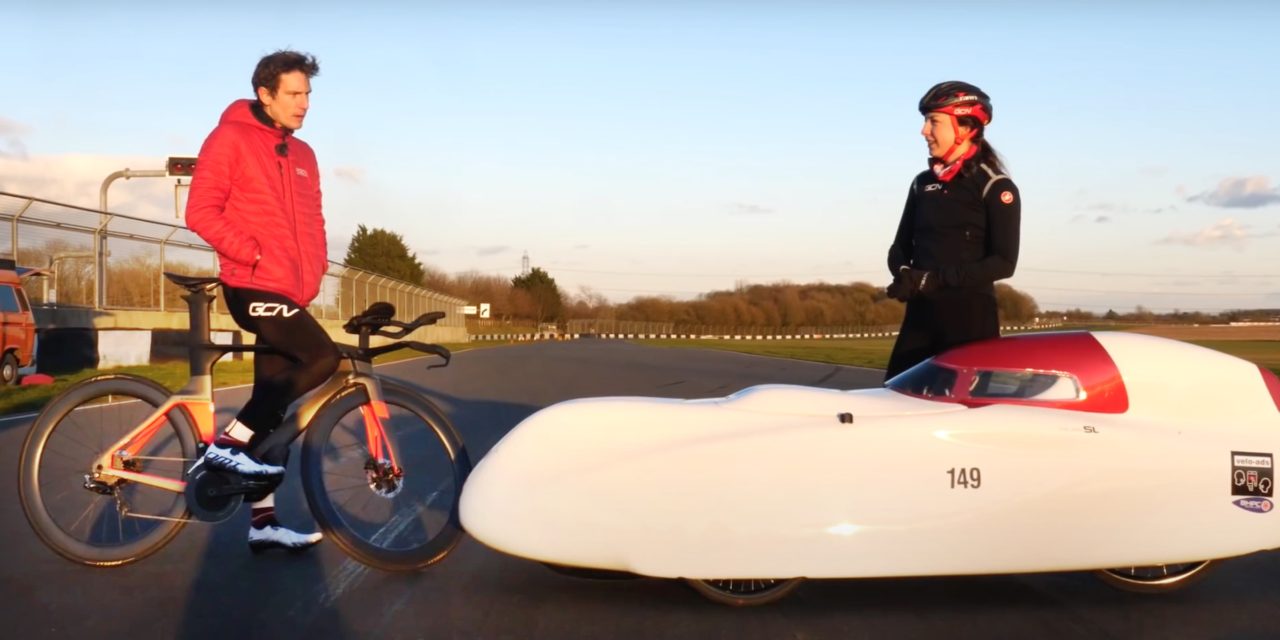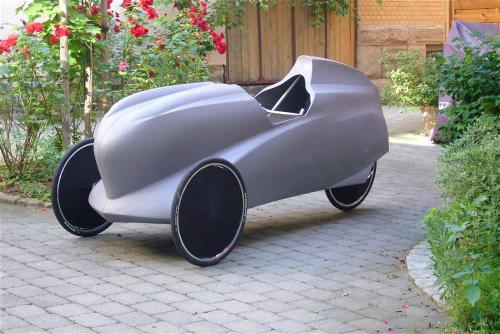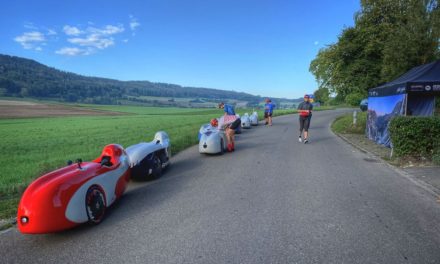It’s a never-ending discussion. Is a recumbent really faster than a classic road bike? And under what conditions? And are we just talking about a recumbent, a recumbent with a partial fairing, or even a velomobile? And on the other side should be a road bike or a time trial special or a bike designed and ridden on a velodrome? And who should be the rider?
There are more questions than answers. Yes, there are some answers, but they are mostly tendentious or inconclusive. And it doesn’t matter if the classic upright bike or the recumbent wins.
The latest oil in the fire of this discussion has been added by a series of videos from GCN, the most-watched cycling Youtube channel, the last two of which compare a road bike with a velomobile at a racetrack in Great Britain. In the first, the velomobile beat the road bike, but in the second (hereunder), which came out yesterday, it was the opposite. However, behind the handlebars sat a professional cyclist on the time trial special, who basically does nothing but ride similar machines. A woman was sitting in a velomobile with tourist tires, and the velomobile was also too big for her. Manon is also a former professional cyclist, but hardly she could ever be equal to her opponent, even on a classic bike. And so it is in the other videos that I discovered, which you will find below.
So what should it look like?
The fundamental problem is that there is basically no professional recumbent cyclist. Each of the people who race recumbents also has their usual job, and riding a recumbent is basically a hobby for them. Therefore, in my opinion, it makes no sense to compare a recumbent bike with a classic upright bike in events such as the Tour de France. It must be a much shorter distance. Although, on the other hand, very long races without stages, but ridden as one long ride, in which the stopwatch ticks day and night, such as Race Across America (RAAM) or Trans Am, have had winners on recumbents in some categories.
It is clear that on a flat or in slightly hilly terrain a recumbent would probably win easily. It will be much worse in the hills because of the higher weight of recumbents. But what does “hilly terrain” mean? Is it possible to perform at least a slightly provable test? And what should it look like?
Gradually, I came to the conclusion that it would be interesting to make comparisons on three different routes. All about 100 km long. One more or less flat, the other slightly hilly, the third with serious climbs, but also subsequent descents. The routes should be run probably solo with time measurement. So not as a group race, which in most cases would end up as a solo ride of each of the riders anyway. Climatic conditions should be ideally comparable.
The bikes should be at a very high level, ideally the best that can be purchased on a regular basis. Velomobile, fast recumbent bike, and a classic upright road bike. Among the riders should appear a semi-professional, or even a professional cyclist, a trained hobby cyclist both on the upright bikes and the best recumbent cyclists, who still fall into the category of “trained hobby cyclist”.
What do you think about it?
It is clear that complete objectivity cannot be achieved. It is more or less about setting the best possible rules for a test that may sometimes be performed.
You can ideally express your opinions here below in the Disqus discussion or on Facebook. If you know of a similar test that has already been performed, let me know as well.
An interesting statement can be found in another video from GCN about different bans in cycling. The important part for us starts somewhere here.






